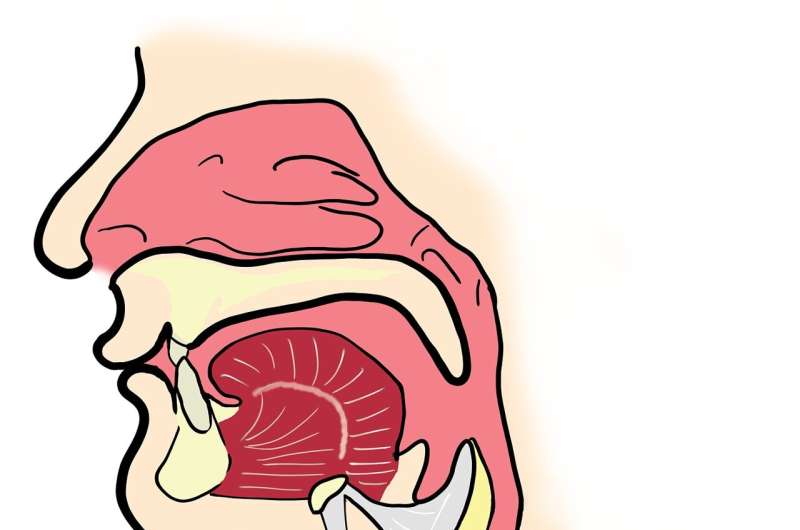New options for laryngeal regeneration using 3D printing

Mayo Clinic is using 3D printing as a new option to heal the larynx after cancer or traumatic injury.
David Lott, M.D., a Mayo Clinic otolaryngologist and head and neck surgeon, is an expert who can speak about a pioneering procedure using 3D bioimplants and tissue engineering to regenerate the larynx, more commonly known as the voice box. Dr. Lott also is the associate director of the Center for Regenerative Medicine at Mayo Clinic in Arizona. The center supports his work as part of its objective of bringing new cures to patients with rare and complex disorders.
"In my lab, we've adopted a saying 'regenerating hope; restoring lives,'" says Dr. Lott. "In the past, the only option was to remove the entire larynx. With new high-tech regenerative tools, now we can remove only the disease and preserve the healthy portion of the larynx. We see a lot of patients who could benefit from some level of laryngeal regeneration."
After surgery to remove the larynx—a procedure known as a laryngectomy—patients must breathe through a hole in their neck. Even simple tasks like taking a shower become burdensome. For example, if too much water were to get into the neck opening, it could cause drowning.
Without a larynx, a person must communicate in new ways without vocal cords. Some learn to speak either with a mechanical device that emits a robotic-sounding voice or speak by pushing air through the throat—a sort of "burp talk."
Overcoming challenges of regeneration
The larynx is a delicate organ that is composed of tissue and cartilage intricately shaped to assist with breathing and speaking. Dr. Lott's team takes a CT scan before surgery to precisely measure the area affected by disease or injury. Based on that scan, they bioprint a 3D scaffold shaped like the tissue that was removed. That scaffold is then implanted in the patient and covered with muscle. The bioprinting technology has the potential to regenerate cells and blood vessels, and integrate them in the scaffold, restoring natural function.
"One of the biggest challenges with the 3D implant is ensuring the cells survive long enough for the body's own blood supply to grow into that scaffold and regenerate tissue," says Dr. Lott. "The second challenge is implanting an exact replica of what was removed in surgery. If the vocal cords are off even a millimeter or two, it can affect a person's ability to swallow or speak."
Dr. Lott and his team have implanted several of these scaffolds in patients who've had larynx and trachea surgery. In each case, he has seen the procedure help restore their ability to speak, breathe and swallow.
Avoiding square pegs in a round hole
Before 3D printing technology, patients had limited options. One was to remove the diseased portion of the larynx and leave a gap covered by muscle. Another was to take a bone from somewhere else in the body and try to mold it to fit the larynx.
"That was kind of like trying to put a square peg in a round hole," says Dr. Lott. "It would require multiple revision surgeries. The vast majority of patients would opt instead to have their entire voice box removed as opposed to going through a prolonged reconstruction procedure."
The partial larynx implants are laying the foundation for the first ever larynx transplants at Mayo Clinic. The United Network for Organ Sharing, or UNOS, has approved Dr. Lott and his team as the first laryngeal transplantation program in the country.
"This gives us more tools in the regenerative medicine toolbox," says Dr. Lott. "With tissue engineering and 3D printing, we can only regenerate a little over half of the voice box. A transplant would potentially restore or replace the entire larynx, providing new options to a subset of people who need a total laryngectomy."
Dr. Lott is evaluating patients for the larynx transplant program. The best candidates are those who have damage to their larynx or have been cancer-free for at least five years.
About Dr. Lott
After graduating from the medical school at The University of Iowa, Dr. Lott completed a six-year residency in otolaryngology. He spent one of those years in research associated with the first laryngeal transplants in the U.S. Following that, Dr. Lott completed a fellowship in laryngeal surgery at Harvard University, where he refined his skills in this complex surgery.
"It's been a long but worthwhile journey to get to this point professionally," says Dr. Lott. "It's very rewarding to provide new options for restoring health for someone who had lost hope."
















